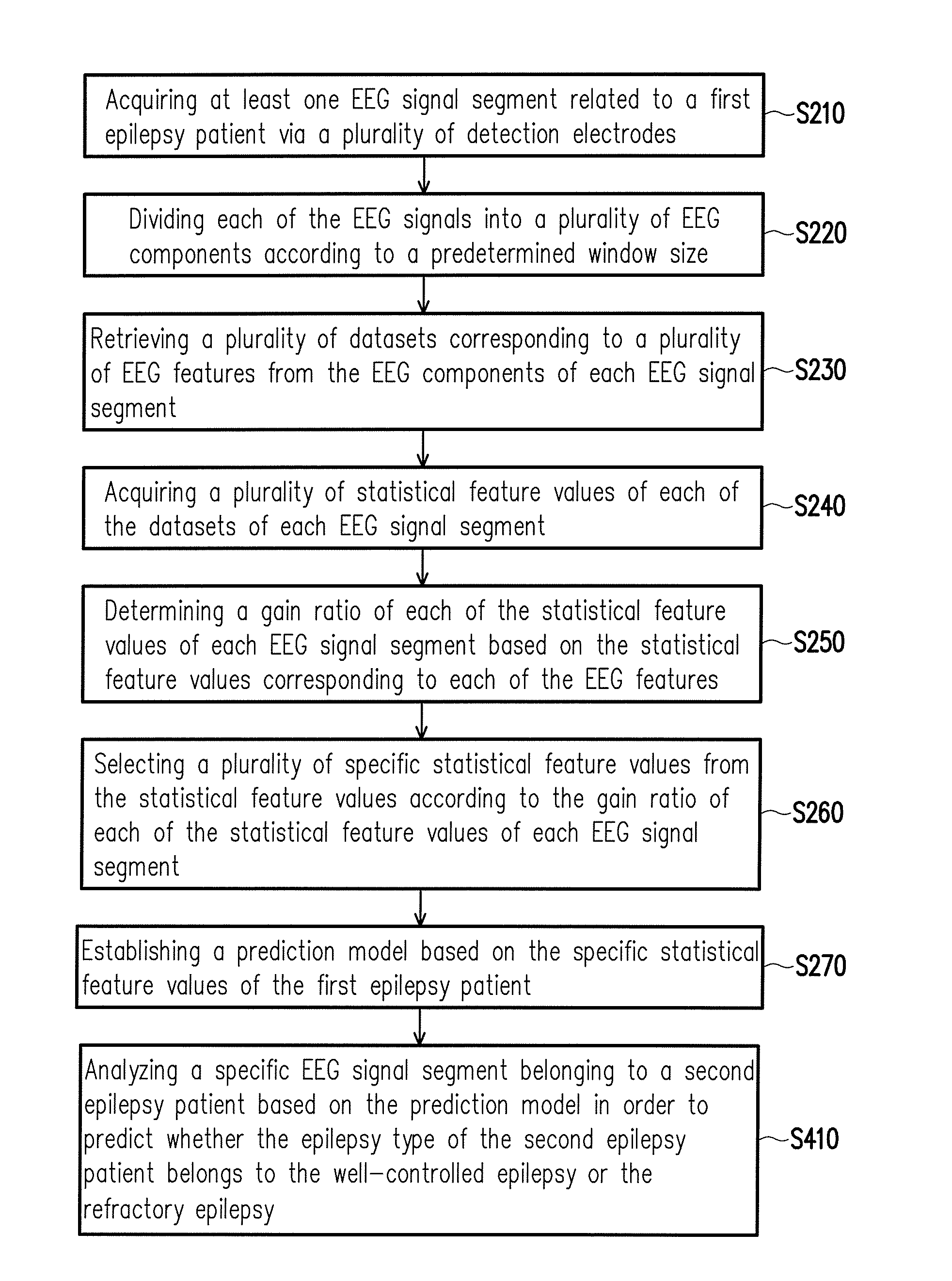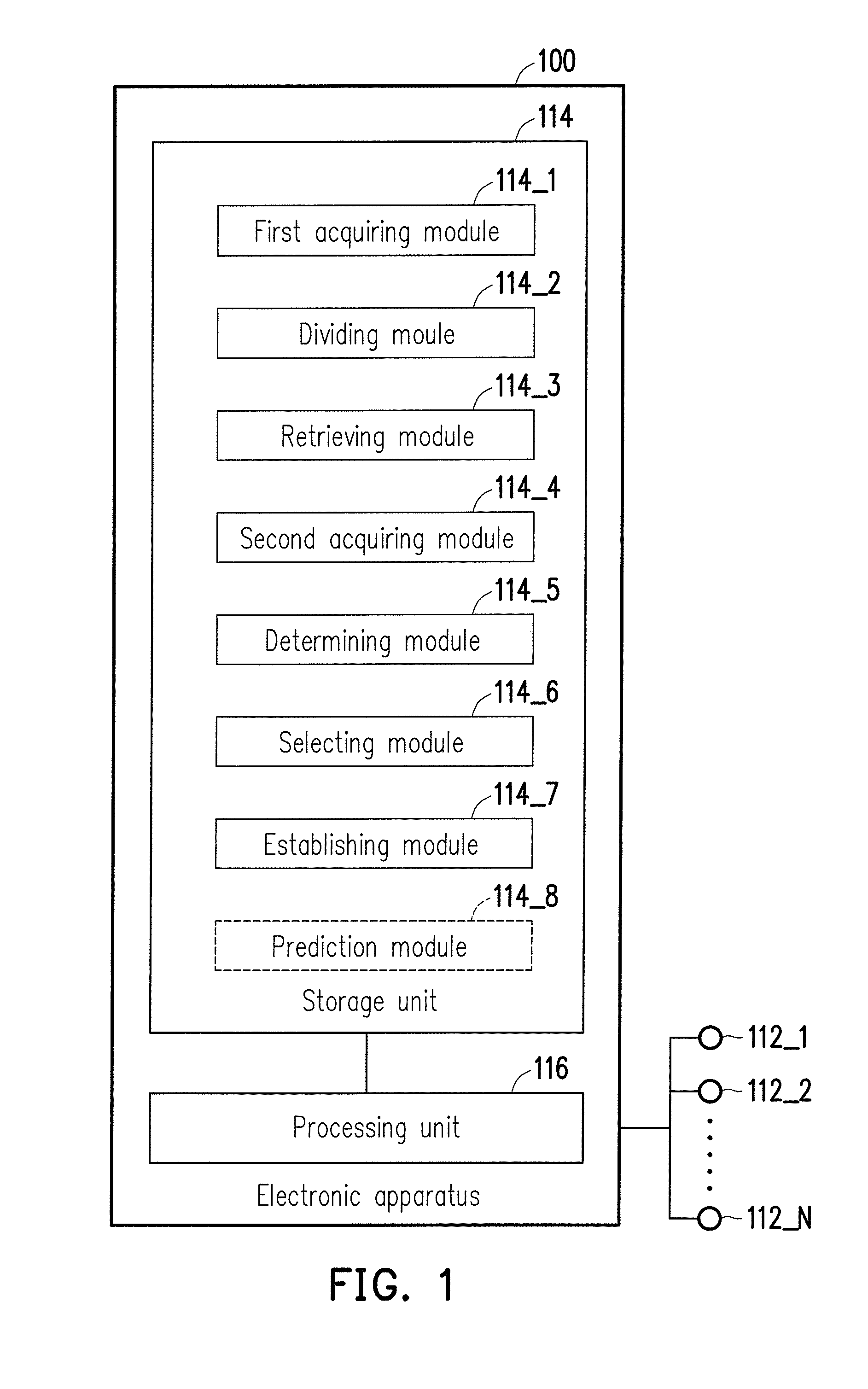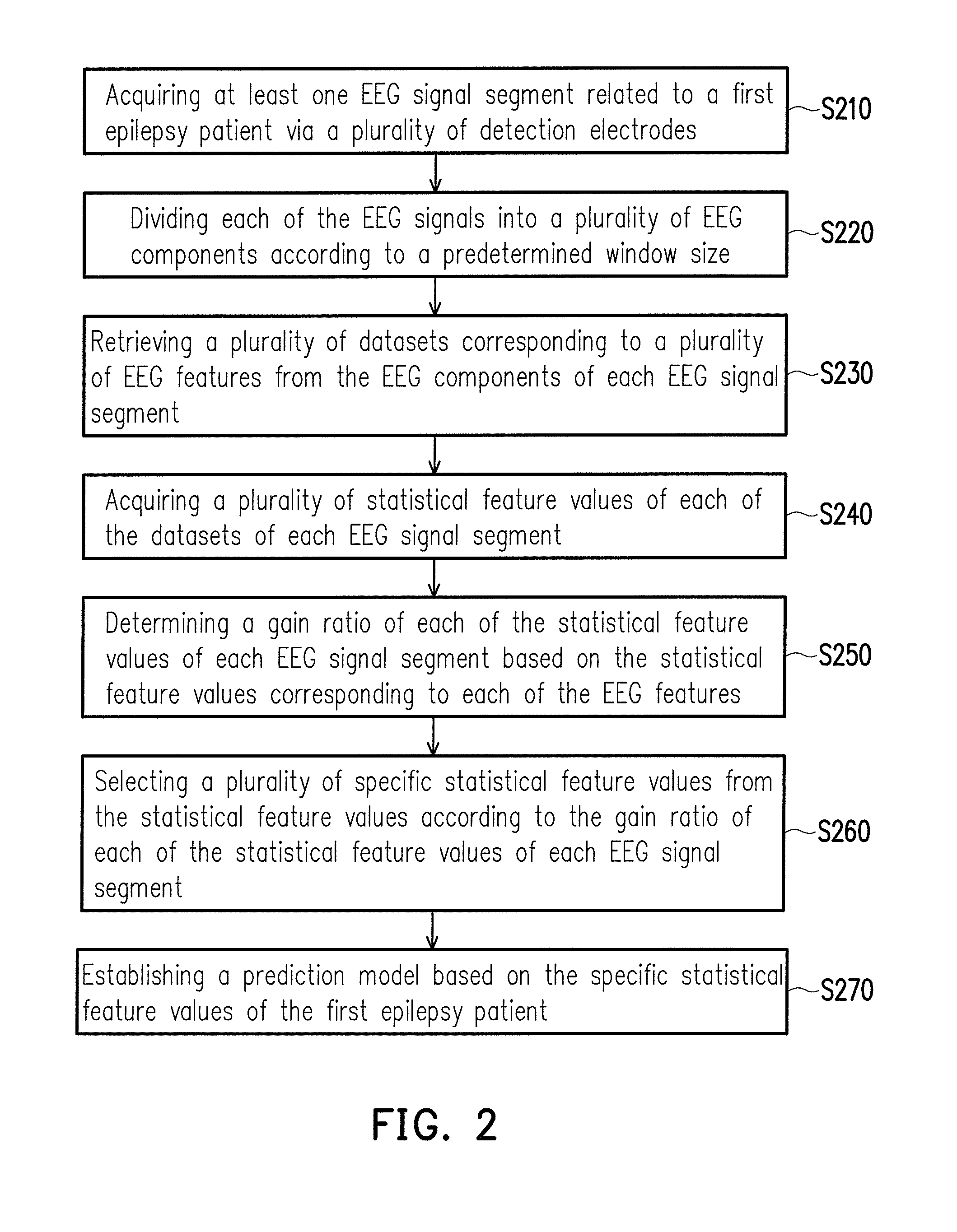Electronic apparatus for establishing prediction model based on electroencephalogram
a technology of electroencephalogram and electroencephalogram, which is applied in the field of electroencephalogram, can solve the problem that not every patient shows improvement on the condition
- Summary
- Abstract
- Description
- Claims
- Application Information
AI Technical Summary
Benefits of technology
Problems solved by technology
Method used
Image
Examples
first embodiment
[0027]FIG. 2 is a flowchart illustrating a method for establishing prediction model based on electroencephalogram according to the invention. The method proposed by the present embodiment can be executed by the electronic apparatus 100 depicted in FIG. 1, and each steps of the present embodiment is described in detail with reference to each element depicted in FIG. 1.
[0028]In step S210, the first acquiring module 114_1 may acquire at least one EEG signal segment related to a first epilepsy patient via a plurality of detection electrodes 112_1 to 112_N. The first epilepsy patient is, for example, an ith (where i is a positive integer) epilepsy patient among a plurality of epilepsy patients with a known epilepsy type. Further, in the present embodiment, said first epilepsy patient is not yet received an antiepileptic drug treatment. Subsequently, in step S220, the dividing module 114_2 may divide each of the EEG signals into a plurality of EEG components according to a predetermined w...
second embodiment
[0051]As mentioned above, in the embodiments of the invention, the prediction model for predicting the therapeutic efficacy of the music therapy to the epilepsy patient is further provided which is described in detail as follows.
[0052]In the second embodiment, the electronic apparatus 100 may also execute steps S210 to S270 to establish the prediction model for predicting the therapeutic efficacy of the music therapy to the epilepsy patient.
[0053]However, one of differences between the second embodiment and the first embodiment is that the second embodiment considers whether the first epilepsy patient belongs to a first-type patient or a second-type patient. The first-type patient represents patients whose epilepsy condition is improvable by the music therapy, and the second-type patient represents patients whose epilepsy condition is not improvable by the music therapy.
[0054]Further, the at least one EEG signal segment of the first epilepsy patient (to whom whether the therapeutic...
third embodiment
[0068]As mentioned above, in the embodiments of the invention, the prediction model for predicting the epilepsy seizure state of the epilepsy patient is further provided which is described in detail as follows.
[0069]In the third embodiment, the electronic apparatus 100 may also execute steps S210 to S270 to establish the prediction model for predicting the epilepsy seizure state of the epilepsy patient.
[0070]However, one of differences between the third embodiment and the first embodiment is that the first acquiring module 114_1 acquires the at least one EEG signal segment from the artifact-free signal based on a sliding window mechanism. Adjacent two EEG signal segments in the at least one EEG signal segment overlap with each other for a predetermined time interval (e.g., 20 seconds), and the sliding window mechanism is corresponding to a sliding window size (e.g., 30 seconds).
[0071]In the present embodiment, because the epilepsy seizure state reflected by each EEG signal segment ...
PUM
 Login to View More
Login to View More Abstract
Description
Claims
Application Information
 Login to View More
Login to View More - R&D
- Intellectual Property
- Life Sciences
- Materials
- Tech Scout
- Unparalleled Data Quality
- Higher Quality Content
- 60% Fewer Hallucinations
Browse by: Latest US Patents, China's latest patents, Technical Efficacy Thesaurus, Application Domain, Technology Topic, Popular Technical Reports.
© 2025 PatSnap. All rights reserved.Legal|Privacy policy|Modern Slavery Act Transparency Statement|Sitemap|About US| Contact US: help@patsnap.com



